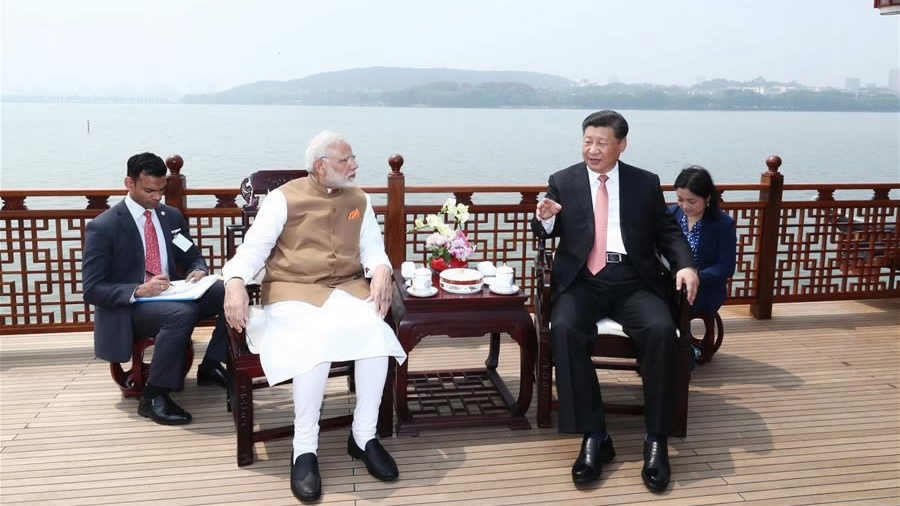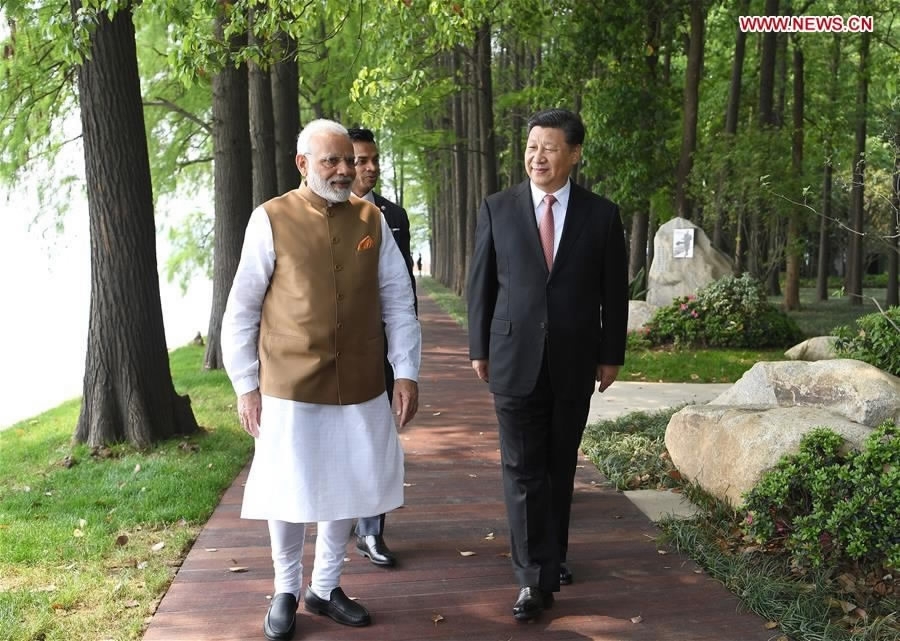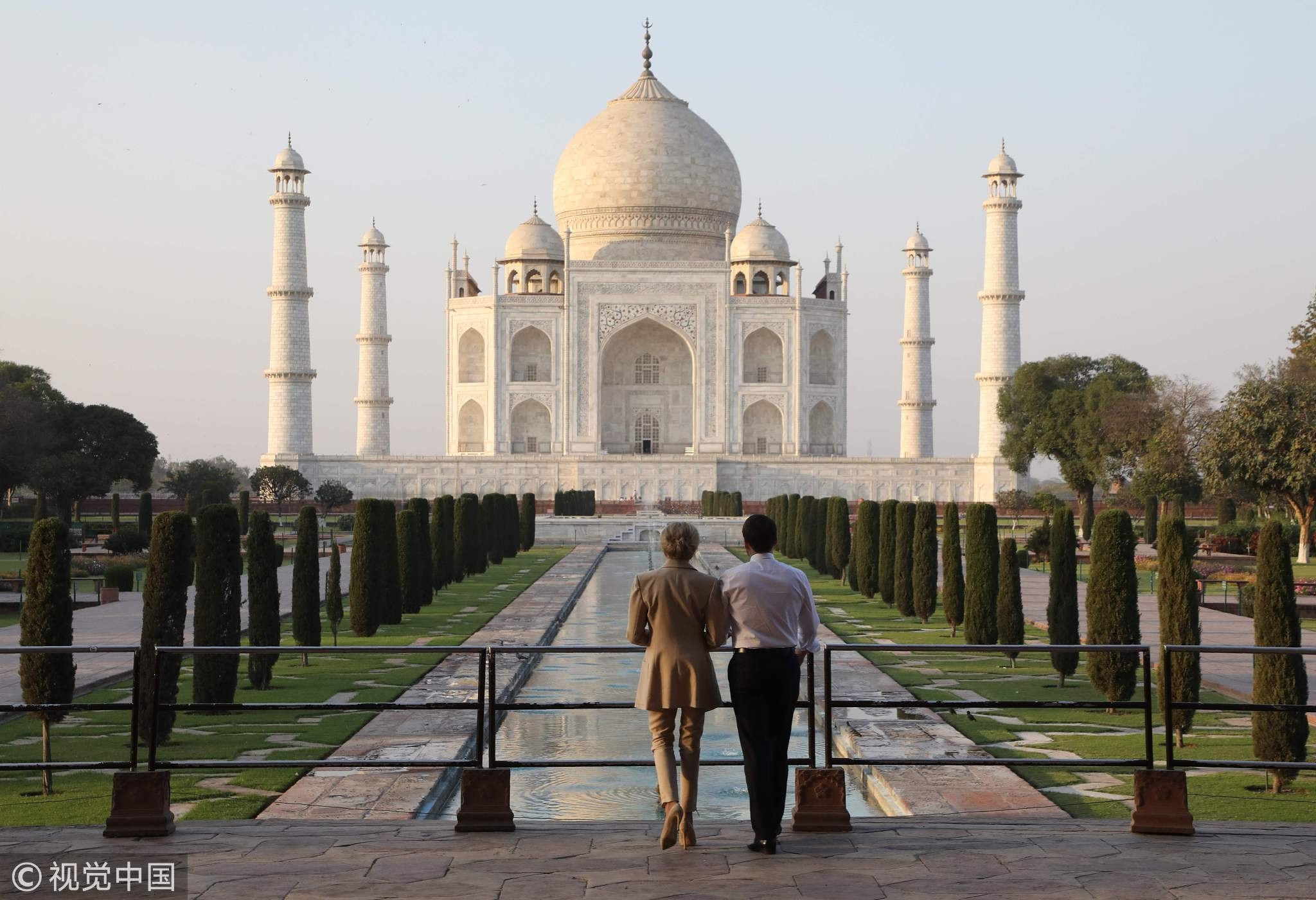
Opinions
11:48, 30-Apr-2018
Opinion: China and India – the irreversible rise of the East?
By CGTN's Wang Xinyan

On the same day that the leaders of the Democratic People's Republic of Korea and the Republic of Korea, Kim Jong Un and Moon Jae-in, met, capturing the world’s attention, another meeting was taking place that may prove to be just as significant, if not more so. In Wuhan, the capital city of central China's Hubei Province, Chinese President Xi Jinping and Indian Prime Minister Narendra Modi’s hands clung to each other, sending a strong signal that a new era may be about to begin between China and India.
The rare meeting may not have attracted the same level of attention as the inter-Korean summit, but it meant a lot for both China and India, the largest two developing countries in the world, and was all the more remarkable considering the Donglang (Doklam) standoff which happened only last year.
China can help India’s development
Some media analysts say that the Indian elections next year are the real reason for Modi looking to improve relations with China. From a practical point of view, Modi indeed needs to provide something tangible he can show to the electorate in terms of improving Sino-Indian relations, but the development of India matters more.

Chinese President Xi Jinping (R) talks with Indian Prime Minister Narendra Modi in Wuhan, capital of central China's Hubei Province, April 28, 2018. /Xinhua Photo.
Chinese President Xi Jinping (R) talks with Indian Prime Minister Narendra Modi in Wuhan, capital of central China's Hubei Province, April 28, 2018. /Xinhua Photo.
“Modi is an ambitious leader. He clearly knows that if India wants to develop, it cannot confront China. Improving relations with China will help India attract investment from China and improve the international environment. Otherwise, it will hinder India’s development,” Long Xingchun, a research fellow at the Charhar Institute and director of the Center for Indian Studies at China West Normal University, told CGTN.
Modi has a reputation for being decisive, strong and pragmatic; he must know that China could be a great help to India’s development. Maybe he also wants to improve India’s relationship with the US; however, the businessman-turned-president, Donald Trump, also wants to initiate a “trade survey” with India. “Trade surveys” can often be a precursor for finding “unfair” trade practices and so this obviously irritates India and could be another reason Modi is changing his policy toward China.
China doesn’t want to be an enemy of India either, especially when the United States is targeting China. As the two biggest developing economies, both sides should regard each other as active factors in changing the current world power structures, as they share the same values in supporting multilateral trading systems and opposing protectionism.
Russia, China, India: the new shape of geopolitics?
As the relationship between China and India has improved, perhaps the happiest person due to this latest development is Russia’s President Vladimir Putin.

A train passes by China's Great Wall. /VCG Photo.
A train passes by China's Great Wall. /VCG Photo.
In Long’s opinion, Russia has always been an active advocate of the Russian, Chinese and Indian triangle. Under the current world situation, and if the relations between China, India and Russia are friendly, it will help all three countries face the challenges posed by the United States, primarily Trump’s move away from global multilateralism and toward unilateralism. China-India-Russia cooperation can promote the development of a multi-polar world, which is the basic appeal for the dialogue between the three countries.
Russia hopes to have a good relationship with China and India. In last year’s Sino-Indian conflict in Donglang, Russia also participated in mediation and promoted Sino-Indian communication.
The improvement of China-India relations is conducive to the establishment of a trilateral mechanism between China, India and Russia. This is what Russia hopes to see. Of course, the United States is upset as its dominant position on the world stage is seriously being threatened.
Reviving oriental civilization is a common pursuit
But, even without Russia, it is important to see why the two-day meeting between Modi and Xi was so important. During the meeting, China and India reached a consensus that “the promotion of the rejuvenation of oriental civilization will make positive contributions to world peace and development.”

The Taj Mahal in Agra, India. /VCG Photo.
The Taj Mahal in Agra, India. /VCG Photo.
This concept can be echoed by the words of Deng Xiaoping, the architect of China's reform and opening up, who once said the new Asian or Asia-Pacific century cannot come until China, India and other countries have developed, when he met the visiting Indian Prime Minister Rajiv Gandhi in December 1988.
“The Asian century is in line with today's rejuvenation of oriental civilization. Since ancient times, China and India have always been the countries with the most advanced science and technology and the highest degree of civilization, making great contributions to humanity. In modern times, both China and India lag behind Western countries. If China and India develop through cooperation, it will help to revive oriental civilization and create a new century in Asia,” said Long.
The world is undergoing a major change that has not existed in a century. Therefore, the re-emergence of Eastern civilization is an irreversible trend.
(The article is based on an interview with Long Xingchun, a research fellow at the Charhar Institute and director of the Center for Indian Studies at China West Normal University. The article reflects the author's opinion, and not necessarily the views of CGTN.)

SITEMAP
Copyright © 2018 CGTN. Beijing ICP prepared NO.16065310-3
Copyright © 2018 CGTN. Beijing ICP prepared NO.16065310-3